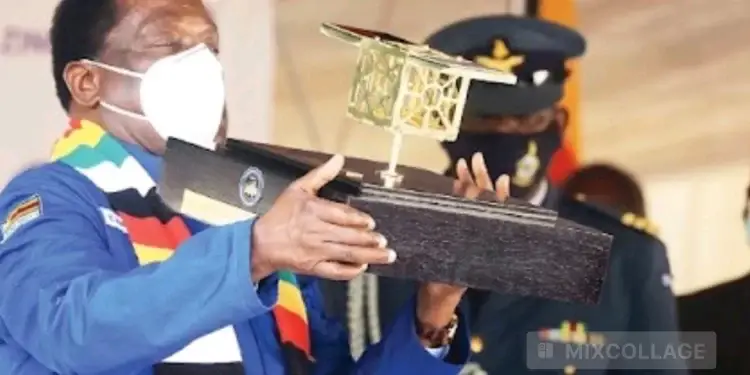THE Government is gearing up to expand Zimbabwe’s space programme, with plans in motion to launch into orbit three additional satellites that are designed to enhance the country’s earth observation capabilities and communications infrastructure.
The ambitious development follows the successful deployment of ZimSat-1, the country’s first earth observation cubesat, in November 2022.
Another earth observation satellite, ZimSat-2, with more advanced features is already under development and on track for launch later this year.
In addition, the Government has approved two further satellites, which are presently in their initial development stages.
In a recent interview with The Sunday Mail, Finance, Economic Development and Investment Promotion Minister Professor Mthuli Ncube said: “You are aware that Japan was Zimbabwe’s partner in the development of our space satellite and now we are moving to phase two of building another space satellite, and again with the support of Japan, and they have been training our graduates in this regard.
“We are working on more satellites, with three more on the way . . .”
In a separate interview, Zimbabwe National Geospatial and Space Agency (ZINSGA) coordinator Mr Painos Gweme confirmed the development.
“I do confirm that in line with Zimbabwe’s national space strategy, ZINGSA is working on satellite manufacture, assembly, test and launch within a collaborative research framework with various partners,” he said.
“The collaborative research programme is being done to build our own local human capacity capable of designing, manufacturing, testing and launching satellites, setting up ground stations, uplink and downlink data and monitor and control satellites throughout their life in orbit.
“So, by June this year, you will be able to get concrete feedback on the progress of the second satellite.”
The launch of ZimSat-1 in 2022, he said, was “the beginning of the journey to the launching of more satellites”.
ZimSat-2 will reportedly be fitted with advanced technological features that will enhance Zimbabwe’s earth observation capabilities.
“The main purpose of these earth observation satellites is to provide scientific data of the current situation in the country.
“The ZimSat-1 was an educational earth observation cubesat with an objective of mapping land use, land cover and water quality monitoring,” he added.
“The second satellite will also be an earth observation satellite with more capabilities than ZimSat-1.
“The satellite will have more advanced sensors than the first one and the image resolution has been improved.
“This second satellite, like the previous and others to come, will ensure that local skills are developed, technology transfer is realised and localised.
“Above all, we will have a guaranteed continuation of landscape monitoring for the coming two to four years.”
Currently, Zimbabwe’s first earth observation satellite, ZimSat-1, transmits data from orbit to the command centre at the Mazowe ground station. Since its launch, it has assisted in agricultural and mining mapping exercises.
The earth observation cube satellite was designed to provide valuable data for various applications.
It is equipped with a multi-spectral optical imager, meaning it can capture images of the earth’s surface in multiple wavelengths, allowing scientists and analysts to assess land cover, soil fertility and water quality.
It also has a red-green-blue colour optical imager, specifically suited for agricultural mapping purposes, which helps identify crop health, monitor deforestation and track changes in land use over time.
Only a handful of African countries, including South Africa (11); Egypt (10); Nigeria (six) and Morocco (three), have multiple satellites in orbit. As part of efforts to develop its space programme, ZINGSA signed a memorandum of understanding with Russia’s space corporation Roscosmos in Moscow in November 2021.
The two parties discussed cooperation in the field of earth remote sensing from space, as well as the training of specialists for the space industry.
During their visit to Russia, the Zimbabwean delegation visited Russian rocket and space industry enterprises.
They also visited the Russian Space Systems-Scientific Centre for Earth Operational Monitoring, NPO Lavochkin and the TsNIIMash Mission Control Centre.
Zimbabwe launched ZINGSA in July 2018.
Its mandate is to enhance Zimbabwe’s capability to harness space technologies.
Source Byo24news









